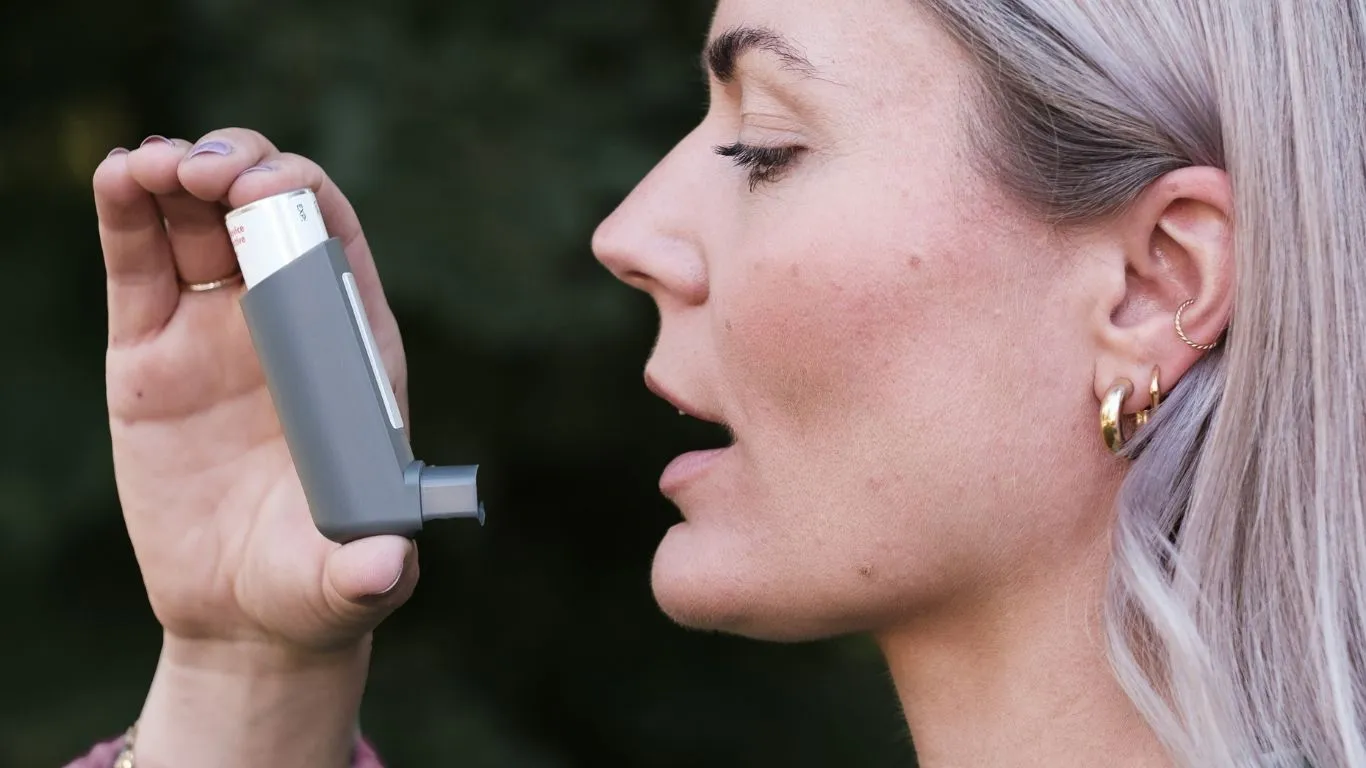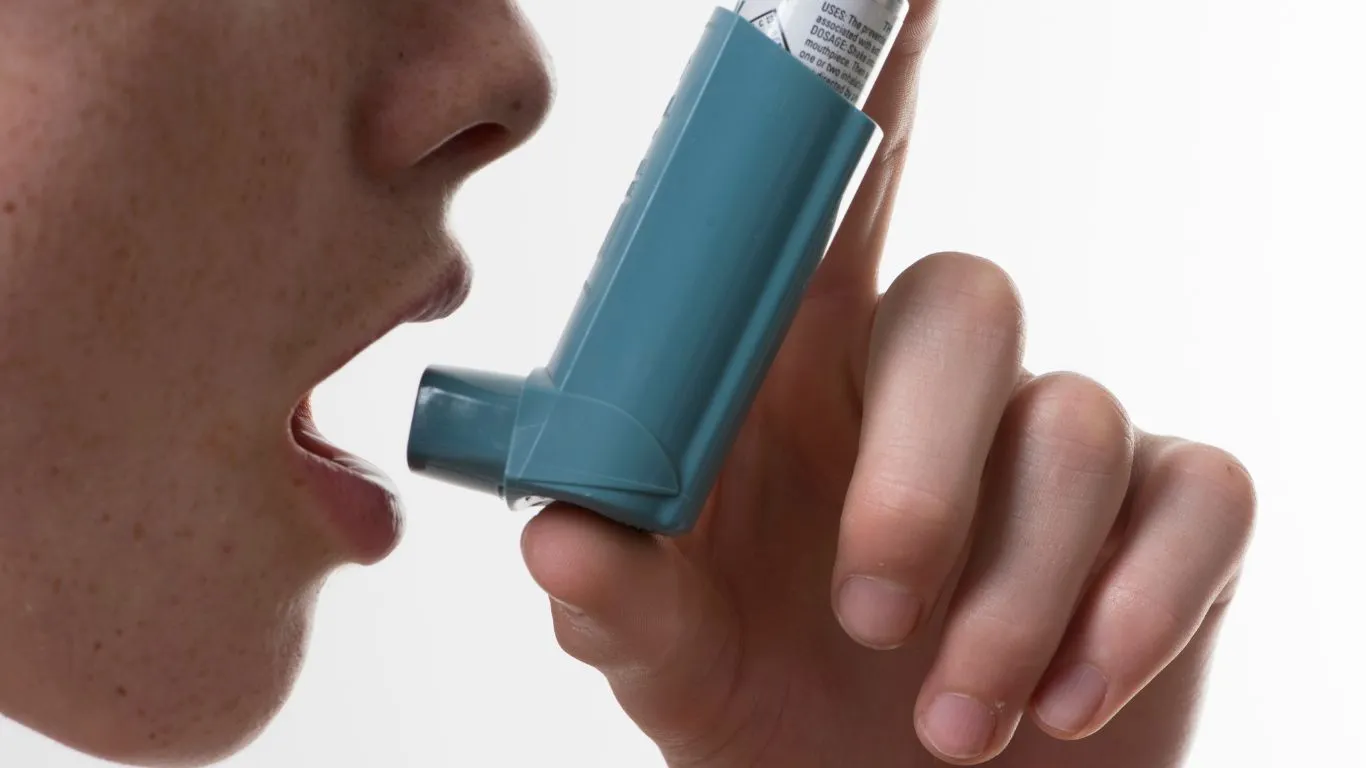How to Prepare for an Asthma Emergency at Home: Essential Steps You Must Know
As someone who’s spent years working as a Pulmonary Nurse, I’ve seen firsthand how stressful and scary an asthma emergency can be, especially when it happens at home. Whether you’re dealing with asthma yourself or caring for someone who has it, knowing how to prepare for an asthma emergency at home can make all the difference between panic and managing the situation calmly and effectively. It’s all about being proactive, staying calm, and having the right tools in place. In this guide, I’ll walk you through what you need to know to be fully prepared, drawing from both professional experience and personal insights that can help you tackle an asthma emergency with confidence.
Understanding Asthma and Its Triggers

Before diving into how to prepare for an asthma emergency at home, it’s important to understand a bit more about asthma itself. Asthma is a chronic condition that affects the airways in the lungs, causing them to become inflamed and narrow, making it harder to breathe. The symptoms vary from person to person, but common signs include shortness of breath, wheezing, coughing, and chest tightness. The severity of an asthma attack can range from mild discomfort to life-threatening distress.
One of the key things to remember is that asthma is often triggered by specific factors, which can vary widely. Common asthma triggers include:
- Allergens: Dust, mold, pet dander, and pollen are some of the most common allergens that can set off asthma symptoms.
- Air Pollution: Poor air quality, including smoke or exhaust fumes, can worsen asthma symptoms, especially if the air is cold and dry.
- Respiratory Infections: Colds and flu can exacerbate asthma and lead to more severe attacks.
- Exercise: Physical activity, particularly in cold or dry air, can trigger an asthma attack for some people.
- Stress and Emotional Factors: Anxiety, panic, or high levels of stress can lead to an asthma flare-up.
Why Preparing for an Asthma Emergency is Crucial
Asthma can be unpredictable. That’s why it’s so important to prepare for the possibility of an asthma emergency before it happens. If you wait until the last minute to figure out how to respond, it might be too late. Having a plan in place can not only help you feel more in control, but it can also save lives. I can’t tell you how many times I’ve seen patients and families who were caught off guard because they didn’t have the necessary tools or knowledge at home. Being prepared is a key part of managing the condition, and it starts with understanding the risks and knowing when it’s time to seek help.
Step 1: Know Your Asthma Action Plan

One of the first steps in how to prepare for an asthma emergency at home is to have an Asthma Action Plan. This personalized plan is typically developed by your doctor or healthcare provider and outlines what to do in case of an asthma attack. It’s tailored to your specific symptoms, medications, and triggers. Trust me, when you’re in the middle of an asthma emergency, you’ll want to have clear guidance on what steps to take.
Your Asthma Action Plan will usually include:
- Green Zone: This is when your asthma is well-controlled. You’ll have a set of instructions for how to manage your condition on a daily basis and prevent flare-ups.
- Yellow Zone: This indicates that your asthma is worsening. It’s a warning sign that you need to take extra precautions, like using your quick-relief inhaler more often.
- Red Zone: This is an emergency. When you’re in the red zone, you need to take immediate action, which may involve using rescue medications or calling for emergency help.
Make sure you and everyone in your household are familiar with the plan. Keep a copy in a visible spot, like on the fridge or next to your phone. Having that written out and easy to access during an emergency can really make a difference in staying calm and knowing what to do next.
Step 2: Keep Medications and Equipment Handy
Another essential step in preparing for an asthma emergency at home is ensuring that you always have your medications and equipment nearby. I can’t emphasize enough how important it is to have a consistent routine when it comes to asthma medications, especially if you or someone else in your household has a history of severe asthma attacks. In a crisis, every second counts, and you’ll want to avoid wasting time hunting for medication or equipment.
Here’s a checklist of things you should always have on hand:
- Rescue Inhaler (Bronchodilator): This is your first line of defense when an asthma attack occurs. It’s important to have it easily accessible at all times.
- Spacer: If you use an inhaler, a spacer can help ensure the medication reaches your lungs more effectively.
- Peak Flow Meter: This device helps you measure how well air is moving in and out of your lungs, which can be a good indicator of how bad your asthma is.
- Extra Medications: If you have any long-term control medications, make sure you have an extra supply on hand, in case of an emergency.
Keep these items in a place where you can easily grab them. I’ve seen patients who, in the heat of the moment, couldn’t find their inhaler or didn’t realize they were out of medication. That’s why it’s critical to stay organized and prepared!
Step 3: Monitor Air Quality and Triggers

Being proactive about monitoring your environment is another key aspect of how to prepare for an asthma emergency at home. For many people with asthma, avoiding triggers is just as important as taking medication. If you know certain things trigger your asthma, like smoke or strong cleaning products, take steps to minimize exposure. You can:
- Keep windows closed when pollen or air pollution levels are high.
- Avoid using strong chemicals or air fresheners in the house.
- Use air purifiers to help reduce indoor allergens like dust or pet dander.
- Limit physical activity in certain weather conditions (cold, dry air, or extreme heat).
By staying aware of the air quality and potential triggers, you’ll have a better chance of preventing asthma flare-ups before they even begin. Plus, when you’re in an emergency situation, knowing what caused the attack can help your healthcare provider respond more effectively.
Step 4: Know When to Seek Emergency Medical Help

Knowing when to seek emergency medical help is an essential part of how to prepare for an asthma emergency at home. Sometimes, even with the best preparations, an asthma attack can become severe, and it’s crucial to recognize the signs that indicate you need professional help. As someone who’s worked in pulmonary care for years, I’ve seen patients who waited too long before calling for assistance, and it only made things worse. When it comes to asthma, the earlier you seek medical attention, the better your chances of avoiding a serious, life-threatening situation.
Here are some key signs that indicate you should call 911 or get to the hospital immediately:
- Severe Shortness of Breath: If you’re struggling to catch your breath, despite using your rescue inhaler, and it’s becoming increasingly difficult to speak or move, it’s time to get emergency help.
- Difficulty Speaking or Talking: If you’re unable to speak in full sentences because of shortness of breath, it’s a serious sign that your asthma is out of control.
- Blue Lips or Fingernails: This is a sign that your oxygen levels are dangerously low, and you need immediate medical attention.
- Not Responding to Medication: If your rescue inhaler or other quick-relief treatments aren’t helping after a few doses, don’t wait any longer—call for help.
- Severe Wheezing or Chest Tightness: If you notice a constant wheezing sound or extreme chest tightness that doesn’t go away with medication, you may be facing a medical emergency.
When in doubt, it’s always better to be safe than sorry. It’s easy to second-guess yourself in the moment, but if you feel like something isn’t right, don’t hesitate to call for emergency medical help.
Step 5: Create an Asthma Emergency Kit
Having an asthma emergency kit on hand is another vital step in preparing for an asthma emergency at home. You may already have your regular medications and rescue inhalers, but an emergency kit goes a step further by making sure you have everything you need to manage an asthma attack quickly and effectively. When I was a nurse, I often saw patients who had medications but didn’t have the right backup items on hand. That’s when things can get really stressful, especially if you need extra supplies quickly.
Your asthma emergency kit should include the following essentials:
- Rescue Inhaler: This should always be in your kit, as it’s the first line of defense during an asthma attack.
- Spacer or Nebulizer: If you use a nebulizer or a spacer, make sure it’s clean and in working order. This helps the medication reach your lungs more effectively.
- Extra Medications: Always carry extra doses of your long-term control medications and your quick-relief inhalers.
- Peak Flow Meter: As mentioned earlier, this device helps measure your lung function. It can be a lifesaver in understanding how severe your asthma attack is.
- Allergy Medication: If allergies are a trigger for your asthma, include antihistamines or other allergy medications in your kit.
- Emergency Contacts: Keep a list of your emergency contacts, including your doctor, family members, and any important medical information.
Don’t forget to keep your kit in an easily accessible location—ideally somewhere you spend a lot of time, like the living room or your bedroom. I recommend having one kit for the home and an additional one if you need to leave the house or travel.
Step 6: Stay Calm and Educate Your Family or Caregivers

In an asthma emergency, staying calm is crucial—not just for you, but for everyone around you. Panic only makes things worse and can exacerbate the symptoms. Over the years, I’ve witnessed the importance of having family members, roommates, or caregivers trained in how to manage an asthma emergency. This is something many people don’t think about, but if the person experiencing an asthma attack is too short of breath to talk or communicate, someone else needs to step in and take charge.
Here are some practical tips for ensuring your family or caregivers are prepared:
- Educate Them About Asthma Symptoms: Ensure that everyone knows the signs of an asthma attack and when to take action. Share your Asthma Action Plan with them, so they know what to do.
- Practice Using the Inhaler: Teach them how to properly use your rescue inhaler or spacer. Practice with them a few times, so they’re comfortable with it in an emergency.
- Role Play Emergency Scenarios: It sounds a little extreme, but role-playing can help everyone feel more confident in a crisis. This might include practicing what to do if the person with asthma can’t speak or needs immediate help.
- Stay Calm and Reassuring: If you do experience an asthma attack, encourage those around you to stay calm. It’s easier said than done, but having a calm person nearby can make all the difference.
Everyone in your household should know how to recognize the early signs of an asthma emergency and what to do when they arise. You don’t have to do it alone—make sure you have a support system in place.
Step 7: Regularly Review and Update Your Preparedness Plan

Preparing for an asthma emergency at home isn’t a one-time task. As life changes, so do your needs, medications, and asthma triggers. That’s why it’s so important to regularly review and update your asthma emergency plan. Maybe you’ve moved to a new location where the air quality is different, or perhaps your medications have changed. Whatever the case, make it a habit to revisit your action plan and asthma kit at least once every six months to ensure everything is up to date.
Updating your plan also includes keeping track of your medications and renewing prescriptions as needed. You don’t want to be caught without an inhaler when you need it the most. Check expiration dates on everything from medications to equipment, like your peak flow meter or nebulizer. And don’t forget to check in with your doctor about any changes in your treatment plan.
By staying on top of your asthma care and preparation, you’ll be more ready than ever to handle an emergency if it occurs. Remember, asthma doesn’t have to control your life—being prepared is the key to managing it effectively.
Step 8: Staying Prepared for Seasonal Changes and Weather

Seasonal changes and weather can have a big impact on asthma. When I worked in pulmonary care, we’d often see a rise in asthma-related hospitalizations during particular times of the year, especially in spring and fall. Changes in temperature, humidity, or even air quality can trigger an asthma attack, so it’s important to prepare for these shifts. One of the most common triggers is pollen, which can cause allergic reactions that worsen asthma symptoms. Cold weather, on the other hand, can dry out the air and make breathing even more difficult for asthma sufferers.
Here’s how you can stay prepared for seasonal changes and weather shifts:
- Track Pollen Levels: Use apps or websites to monitor pollen levels, especially during allergy season. If you know your asthma is triggered by pollen, stay indoors when levels are high.
- Dress for the Weather: In cold weather, wear a scarf over your nose and mouth to warm the air you breathe. In hot and humid weather, avoid exerting yourself too much outside, as heat can trigger asthma attacks.
- Use a Humidifier: Dry air can irritate your airways, especially during the winter. A humidifier can help maintain moisture in the air and make breathing easier.
- Plan for Air Quality: If you live in an area prone to pollution or wildfire smoke, stay informed about the air quality. Consider investing in an air purifier for your home to remove allergens and pollutants from indoor air.
Preparing for these seasonal changes will not only help prevent asthma flare-ups but also ensure you’re ready to act quickly if an attack does occur.
Step 9: The Role of Healthy Lifestyle Habits in Asthma Management

Aside from immediate preparedness for an asthma emergency, long-term management plays a huge role in reducing the frequency and severity of attacks. Over the years, I’ve seen countless patients who were able to reduce the number of emergencies they faced by adopting healthier lifestyle habits. These habits don’t just help keep asthma under control—they can actually make managing your condition much easier. It’s something that’s often overlooked when people focus solely on medication, but lifestyle changes can go a long way in preventing asthma attacks and improving overall lung function.
Here are some lifestyle tips that I recommend for better asthma control:
- Exercise Regularly: Believe it or not, regular physical activity can improve lung function and reduce asthma symptoms. Low-impact exercises like walking, swimming, or yoga can help you breathe better and improve your overall fitness.
- Maintain a Healthy Weight: Excess weight can make breathing more difficult and trigger asthma attacks. Maintaining a healthy weight not only improves lung function but also helps reduce the strain on your body.
- Eat a Healthy Diet: A diet rich in fruits, vegetables, whole grains, and lean proteins supports overall health and strengthens the immune system. Foods like apples, ginger, and omega-3 fatty acids may also have anti-inflammatory properties that benefit those with asthma.
- Avoid Smoking and Secondhand Smoke: Smoking is one of the most damaging things you can do for your lungs, especially if you have asthma. Secondhand smoke is just as harmful, so it’s important to avoid environments where smoking is present.
- Manage Stress: Chronic stress can trigger asthma symptoms and make flare-ups more frequent. Finding ways to manage stress, whether through meditation, relaxation exercises, or spending time with loved ones, can significantly improve asthma control.
By adopting a healthier lifestyle, you’re not only improving your overall well-being but also making it easier to manage your asthma on a daily basis. It’s about reducing the stress on your body and making sure your lungs are in the best shape possible for the long haul.
Step 10: Keeping Your Home Safe for Asthma Sufferers
Your home should be a sanctuary—especially for someone with asthma. Keeping your home clean and free from allergens is a crucial part of managing asthma, but it’s something that’s often overlooked. I’ve worked with many patients who were doing everything right in terms of medications and emergency preparedness, but their homes were full of dust, mold, pet dander, and other triggers. A clean and well-maintained home can reduce the likelihood of asthma flare-ups and provide a safe environment when an emergency does occur.
Here are some tips for keeping your home asthma-friendly:
- Regular Cleaning: Dust, vacuum, and wash bedding regularly to reduce dust mites, pet dander, and other allergens. Make sure to use a vacuum cleaner with a HEPA filter, which captures fine particles that might otherwise be missed.
- Limit Pet Dander: If pets are a trigger for asthma, it’s best to keep them out of the bedroom or other areas where you spend a lot of time. If you can, try to avoid bringing new pets into the home.
- Control Humidity: Excess moisture in the home can lead to mold growth, which is a common asthma trigger. Use dehumidifiers in damp areas like bathrooms and basements to keep humidity levels in check.
- Use Non-Toxic Cleaning Products: Many cleaning products contain harsh chemicals that can irritate the airways. Opt for non-toxic, fragrance-free products to reduce the risk of asthma flare-ups.
- Fresh Air: Whenever possible, open windows to allow fresh air to circulate in the home. This helps reduce indoor air pollutants and provides a natural source of ventilation.
Keeping your home environment clean, well-ventilated, and free from triggers is a simple but effective way to ensure that you’re managing your asthma as effectively as possible.
Resources and Further Reading
For more information on asthma management and emergency preparedness, here are some helpful resources:
- Health.com – Asthma Management
- National Institutes of Health (NIH) – Asthma
- Centers for Disease Control and Prevention (CDC) – Asthma
These sources provide expert advice on everything from understanding asthma to emergency preparedness and long-term management strategies. It’s always important to stay up to date with the latest information and guidelines to ensure you’re doing everything you can to protect yourself or your loved ones.
Disclaimer
While this article provides general advice based on my professional experience as a Pulmonary Nurse, it’s important to consult with your healthcare provider for personalized recommendations and treatment. Asthma is a complex condition, and each individual’s needs and responses may vary. This content is intended to help guide you, but it should not replace professional medical advice or treatment.

Bianca Nala is a compassionate Nurse Practitioner with a strong background in primary and respiratory care. As a health writer for Healthusias.com, she combines her clinical expertise with a talent for clear, relatable storytelling to help readers better understand their health. Bianca focuses on topics like asthma, COPD, chronic cough, and overall lung health, aiming to simplify complex medical topics without losing accuracy. Whether she’s treating patients or writing articles, Bianca is driven by a single goal: making quality healthcare knowledge accessible to everyone.






